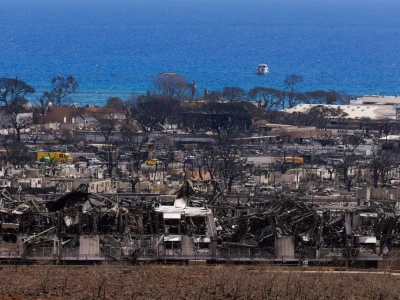
Powerful Hurricane Hilary to weaken before reaching California Sunday
Hilary's heavy rainfall is expected to hit California, Nevada and neighboring Arizona following a record-breaking summer heat wave.
MEXICO CITY, Aug 18 (Reuters) - Category 4 Hurricane Hilary was rushing toward Mexico's Baja California peninsula on Friday morning, a U.S. government agency said, though it should weaken before hitting the U.S. Pacific coast this weekend.
The powerful storm is threatening parts of Mexico and the south-western United States with "significant flooding" and prompted the country's National Hurricane Center (NHC) to issue its first ever tropical storm watch for California.
NHC deputy director Jamie Rhome said although cold waters off California's coastline usually weaken hurricanes and tropical storms, "this system is expected to hold onto to its strength because it will be moving fast."
Hilary was moving west-northwest at nearly 10 miles per hour (17 kph), packing maximum sustained winds of nearly 145 mph (230 kph), after being upgraded to a Category 4 overnight, the NHC said in its latest advisory.
Hilary is expected to approach the west coast of Mexico's Baja California as a hurricane this weekend but weaken to a tropical storm before hitting the U.S. state on Sunday afternoon.
Rhome said California and southern Nevada faced risks from severe flooding caused by up to 10 inches of rainfall.
A storm surge could cause coastal flooding and destructive waves along the Baja California peninsula, the NHC said.
Hilary's heavy rainfall is expected to hit California, Nevada and neighboring Arizona following a record-breaking summer heat wave.
Phoenix, Arizona, endured a month-long stretch of temperatures exceeding 110 degrees Fahrenheit, (43°C) throughout July, according to the National Weather Service, trapped under "heat dome" of stagnant air.
In California's Death Valley desert, temperatures hit 128 Fahrenheit (53 C) in mid-July, among the highest temperatures recorded on Earth in the past 90 years, while tens of millions of Americans were put under heat alerts.
Before the heat wave, about a dozen atmospheric rivers had battered southern California, its central coast and agricultural heartland, causing flooding, landslides and road closures as authorities ordered thousands to evacuate.
Related
Related

Hurricane Idalia: How climate change is fueling hurricanes

Raging California wildfire grows bigger than city of Los Angeles

Storm Beryl kills two, knocks out power as it churns across Texas

